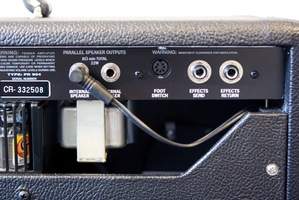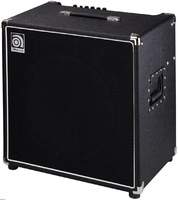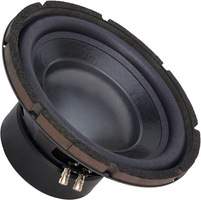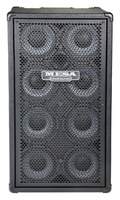Considering that speaker/amp connections, impedance, the different combinations, and incorrect wiring are a recurring source of confusion for audio heads and musicians, we decided to try to clear things up a little.
We will try to explain the most common cases and you’ll have the possibility to post your specific questions in the forums.
The two most common notions that we will use here are impedance (stated in Ohms, Ω, and which has a value from 2 to 8 or even 16 in most cases) and output power (stated in Watts, W, with a value ranging from 1 to 1,000 or even more, since some bass amps produce over 1,200 watts of power!). Following, we will briefly refer to the efficiency of a speaker, which is stated in decibels (dB) in most manufacturer spec sheets, and shouldn’t be confused with the output power stated in the same unity; don’t worry, we will explain you why.
So, we will focus on impedance and power, both for speakers and amps, and explain how to combine them for the best results and to avoid any problems. The output power delivered by an amp, regardless of whether it’s a tube or solid-state amp, is given for a certain impedance. If you fail to follow the indications given you could damage your amplifier more or less seriously, which will surely be detrimental to your wallet. Besides this tutorial, you should read the product manual of your amp first to know how to connect the system the best way.
From now on, we will use the term “amp” for “power amplifier.” In most cases a so-called “amplifier head” combines a preamplification stage (gain, EQ, compression, FX loop, one or more channels, etc.) and a power amplification stage (including the volume control and a presence parameter on some tube amps). Thus, when we speak of tube or solid-state amps, the term applies to the power stage. The fact that a preamp stage features tubes has no consequence on the behavior of a solid-state power amplification stage.
On the other hand, a combo amplifier system includes an amplifier head (preamp + power amp) plus a speaker — all within the same cabinet. But from an electronics point of view, each element has to be considered separately. The internal speaker of a combo has its own impedance and has the same electronic behavior as an external speaker cabinet. Everything that we state here applies to an amplifier head with one or two external speaker cabinets, or to a combo — an amplifier head with a speaker plus an eventual additional speaker cabinet.
We address guitar and bass players from the point of view of a musician. P.A. amplifiers work under the same theoretical basis, but they show a specific behavior. To answer your specific questions about P.A. systems, please refer to the P.A. forum.
Faithful to our “from musicians to musicians” philosophy, we will simplify everything, which will result in electronics specialists thinking our descriptions are inexact. Our goal is to explain to you how to connect your gear, and although it is always nice to understand how it works it is not necessary to know every single detail!
Let’s start with some easy theory: what is impedance?
The impedance of a speaker is the “electrical resistance” to the flow of current for a given frequency. The symbol for impedance is “Z.” The higher the impedance, the more the speaker opposes the current being delivered, and the less it develops output power for a given initial power. The resistance of an 8-ohm speaker is two times higher than that of a 4-ohm speaker. In other words, a 4-ohm speaker will let more current pass through the circuitry than an 8-ohm speaker. The lower the impedance, the more the load increases for the amp feeding it, up to the point where it could short circuit.
The impedance of an amp refers to the resistance it can handle (or it expects to experience) when a speaker is connected. In fact, the electronic circuit is conceived to work with a given impedance, which is often very low according to its construction (about tenfold less than the speaker’s), making output stages very vulnerable to excessively high loads. That’s why manufacturers state the impedance the amp can support in the user’s manual. If the resistance is too low or too high the amp could suffer damages.
Serial, parallel…
In electronics there are two ways to wire a circuit: in series and in parallel. A serial connection means that the components are wired successively in the circuit like in a string of pearls (or like stomp boxes connected one after another). A parallel connection means that the circuits is divided in several branches that feed different elements and are later on brought together again.
In the case of an amp with speaker cabinets, most connections between the amplifier head and the speaker cabinets are made in parallel. For example, the great majority of bass amplifier head manufacturers offer amps with two parallel outputs. The signal is common in the beginning, but it is divided among the two connectors, it goes through one or several speakers, and comes back (via the same cable) into the amp where it meets again with the ground/earth. The same applies to the great majority of guitar amps with two parallel outputs.
It might happen that inside the speaker cabinet some speakers have a serial wiring (i.e. they are directly connected to each other) while the others have a parallel wiring… But then again, if you already open or wire the speakers of a cabinet, you don’t need this tutorial!
Except in some rare cases (for example if you have to connect together a lot of speakers or you have weird speaker cabinets), guitar players will usually find only parallel connections, and will have to connect the amp output directly to the speaker.
Some speaker cabinets provide pass-through outputs that allow you to chain several speaker cabinets without coming back to the amp. Although such wiring is electrically correct, it’s better to avoid them in practice. To avoid any potential problems, don’t leave room for doubt (“which connector should I use to link my two speaker cabinets?”). Regarding such pass-through outputs on speaker cabinets, some manufacturers choose parallel wiring while the others use serial wiring. In short, it’s a headache. Use such connectors only if you know exactly what you’re doing!
Instrument cable, speaker cable…
An instrument cable is a small-diameter wire that includes a single isolated conductor surrounded by a shield. A speaker cable includes two isolated conductors and no shield. It can be an actual risk for amps (especially tube amps) if you don’t use the proper cable: to connect a speaker, you must always use a speaker cable. If you’re not sure, don’t do anything: the conductor of an instrument cable has a very small diameter, which can lead to overheating and destruction of the conductor. As a consequence, the full power cannot be transmitted anymore, which can cause damages to the amp’s output transformer.
Parallel speakers and Ohm’s law – Theory
When it comes to parallel connection of two speaker cabinets, the impedance of the two speakers is NOT added: a pair of 8-ohm speaker cabinets does NOT make 16 ohms, neither does a pair of 4-ohm speaker cabinets make 8 ohms.
To calculate the impedance of a parallel connection use Ohm’s law: 1 / total R = 1 / R1 + 1/ R2 + …
In practice, for most cases, the result is:
- Two 16-ohm parallel speakers: 8 ohms of total impedance
- Two 8-ohm parallel speakers: 4 ohms of total impedance
- Two 4-ohm parallel speakers: 2 ohms of total impedance
- One 16-ohm and one 8-ohm speaker with parallel wiring: 5.33 ohms of total impedance
- One 4-ohm speaker and one 8-ohm speaker with parallel wiring: 2.66 ohms of total impedance
And so on… Since two 8-ohm parallel speakers have an impedance of 4 ohms, adding a third parallel 4-ohm speaker will result in a total impedance of 2 ohms.
In the same way, four parallel 8-ohms speakers have a total impedance of 2 ohms…
If you find a different configuration, a simple calculation will give you the total impedance.
Serial speakers – Theory
To be short, let’s just say that the impedance of speakers connected in series are added. Two serial 4-ohm speakers have a total impedance of 8 ohms.
Once again, in the great majority of cases, no bass or guitar player use serial wiring to connect speaker cabinets. If you ever encounter this situation, carefully check which speakers are connected in series and in parallel before powering on the system.
In practice: connecting speakers to a tube amp
Note: with “amp, ” we mean “power amplifier.” For speakers, there is no difference between connecting a hybrid or a solid-state amp head to them. A hybrid amp is a head with a tube preamp stage and a solid-state power section. The same applies to guitar amps using one or several tubes in their preamp stage but a solid-state power section.
With a tube amp, the output power delivered is constant. This is due to the properties of their electronic circuitry. The amp is rated at a given power (50, 100 or 200 watts). Only the output impedance of the amp can vary depending on the speaker cabinets you use with the amp head.
Most amps allow you to select the output impedance either via a selector or via different outputs that allow you to adapt the output impedance of the amp to the speaker(s) you want to connect. The golden rule says that whenever you connect speaker(s) to an amp, the impedance of the amp ought to be lower than or equal to the total impedance of the speaker(s).
The great majority of bass tube amps offer two parallel outputs and a selectable impedance between 8, 4 and 2 ohms, which are the most common impedance values used for a single or a pair of low frequency speakers. On the amp, “simply” select the impedance value that matches exactly the total impedance of the speaker(s) to be connected to the amplifier head using the rule mentioned above.
For example, if you connect only one 8-ohm speaker cabinet, select an impedance of 8 ohms or less. If you connect two speaker cabinets of 8 ohms each, select the 4-ohm impedance setting. If you connect two speaker cabinets of 16 ohms each, select the 8 ohms impedance setting, etc. Refer to the formula above to find out the impedance of your speaker cabinets connected alone or together.
For guitar amps, the great majority of tube amps also provide two parallel outputs with individual or global impedance selection (generally 4, 8 or 16 ohms, i.e. the most common values for guitar speaker cabinets).
If you can select the impedance of each individual output, set the amp so that each output has a matching impedance, which means that it should be lower than or equal to the impedance of the speaker cabinet connected. To connect two 16-ohm speaker cabinets, each output must be set to 16 ohms or less. To connect two 8-ohm speaker cabinets, each output must be set to 8 ohms or less.
If the setting affects both outputs, set the global output depending on the total impedance of both speakers calculating the result with the formula above. To connect two speakers of 16 ohms each, set the amp to 8 ohms (or less). To connect two speakers of 8 ohms each, set the amp to 4 ohms (or less). Is is starting to make sense?
Tube amps are the easiest. As soon as you know the total impedance of the speaker(s) you want to use, just set the amp amp impedance accordingly or choose the matching output(s) on the amp’s rear panel. The output power of the amp stays the same in every case: a 100-watt amp will always deliver 100 watts of power. Of course, the speaker cabinets must support this output power: in the case of a 100-watt amp, if you connect two speakers to the amp, both must be able to handle 100 watts of power. We will discuss the power rating question below.
Warning: with a tube amp, the lack of a speaker connected to the amp is considered an infinite load. In other words, the circuits in the power amp stage don’t like that at all. NEVER use a tube amp without previously having connected a speaker cabinet!
In practice: connecting speakers to a solid-state amp
In the case of a solid-state amp, the operation is different: the output power is variable while the output impedance of the amp has a constant value. The power of a solid-state amp (50, 100 or 200 watts) is given for the minimum impedance supported.
Actually, as explained above, the impedance is the resistance of the speakers to the current. So, when an amp is rated at 300 watts at 4 ohms, this means that the amp will deliver its full output power (300 watts) only with a 4-ohm speaker impedance.
On the contrary, when the speakers have a higher resistance (for example, 8 ohms), the solid-state amp cannot output its full power although it still operates correctly. To be more precise, based on Ohm’s law, since the resistance of the speaker is multiplied by two (8 ohms is twice as much as 4 ohms! Isn’t it? Right!), the power will be divided by two (in our example, 150 watts instead of 300 watts). When the impedance of the speakers increases to 16 ohms, in other words four times the minimum impedance, the output power of the amp will be divided by four ( 300 / 4 = 75 W).
Finally, if the speakers have a very low resistance to current (below 4 ohms in our example, i.e. 2 ohms, for instance), it can damage the amp. Avoid such connections at all costs!
Solid-state amps are widely used by bass players. Let’s take a 500 watt amp head (at 4 ohms) as an example. In this case, the bass player will have different possibilities:
- When he connects a single 8-ohm speaker the amp operates at approximately half the power: 250 watts. The bass player must also check if the speakers can handle this power: the power handling of the speaker cabinet must be at least as high as the power delivered by the amp (see below). In this case, when it’s turned fully on, the amp sends 250 watts of power to the speaker cabinet. The speaker cabinet must support at least 250 watts.
- When he connects a single 4-ohm speaker the amp operates at full power: 500 watts (same advice on the speaker power rating, see below).
- When he connects two parallel 8-ohm speakers, the system has a total impedance of 4 ohms, so the amp delivers its full 500-watt output power. The output power is more or less equally split among the two speakers (each speaker receives the power that can it can handle, depending on its impedance), so it would be about 250 watts per speaker in this case. The power handling of the speakers must be at least equal to the output power of the amp. In our example, we’ll use two speaker cabinets with power handling of at least 250 watts each.
- When he connects one 4-ohm speaker and one 8-ohm speaker, the system has a total impedance of 2.66 ohms (parallel wiring). Problems in sight: the impedance is lower than the minimum impedance supported by the amp. Do not use this setup.
- When he connects two parallel 4-ohm speakers, the system has a total impedance of 2 ohms. Once again, this is dangerous for an amplifier head with 4-ohm minimum impedance. Do not use this setup!
Finally, our test bass player chose a combo. This combo delivers 300 watts of output power at 4 ohms and the internal speaker has an impedance of 8 ohms:
- When he uses only the combo, the output power of the amp (capable of delivering 300 watts at 4 ohms) is connected to a 8-ohm resistance (impedance of the internal speaker), which is twice the minimum impedance, and delivers the half of its output power (300 / 2 = 150 W).
- When he connects an additional 8-ohm speaker cabinet to the combo (parallel wiring via the combo’s extension), the combination of both speakers results in a total impedance of 4 ohms. The output stage can deliver its full power (300 W) split among both speakers (150 watts).
- When he connects one 4-ohm additional speaker, to complement the internal 8-ohm speaker, the combination of both speakers results in a total impedance of 2.66 ohms (did you get it? Well done!) and the amp won’t be happy at all.
- When he connects his 4-ohm additional speaker but unplugs the internal speaker (this is possible with some combos), the total load of the amplifier is… 4 ohms, so everything’s good for the amp and the bass player.
For guitar players, the possibilities provided by solid-state amps are not very interesting. There are not many solid-state guitar amp heads. Most solid-state guitar amps are combos with low or medium output power. They have exactly the same behavior as in the example above, just replace “bass player” with “guitar player” and the power and impedance values with the values of your amp.
Bi-amped and stereo applications (tube or solid-state amp heads only)
Some amp heads provide two channels either for stereo (left/right channels) or bi-amping applications (low-frequency/high-frequency channels — specially interesting for bass-players).
In this case, each channel has its own, separate power amp stage with its own output power and impedance, and both channels must be considered separately using the rules described above.
Power handling of a speaker and actual power received
Once you know the power sent by the amp to the speaker, you must know how much power the speaker can handle!
It’s the second value mentioned in the specs of the speaker: “speaker cabinet X delivers 200 watts of power at 8 ohms” means that “speaker cabinet X has an impedance of 8 ohms and can handle max. 200 watts of power” (rather than “speaker cabinet X produces 200 watts”). If your amp+speaker combination implies that the speaker cabinet X receives 100 watts of power, it will produce 100 watts max. (with the volume control turned fully on).
Thus, to combine an amplifier head with a speaker cabinet you have to take both elements in consideration so that:
- The amp can provide its maximum output power without damaging itself (impedance and wiring)
- The speakers are safe, i.e. they don’t receive a higher output power than they can handle (choose speakers with power handling matching the output power of the amplifier, or vice versa)
- The sound is good (totally subjective).
Some other criteria when choosing speakers: efficiency and frequency range
In order to make the situation more difficult, there are two other parameters you can eventually take into account when choosing a speaker: efficiency and frequency range.
The efficiency is a comparative value between input and output. In other words, the input power (delivered by the amplifier to the speaker) and the output power (the actual acoustic power produced by the speaker) are compared. Like in every electronic circuitry, there is a inevitable loss when the signal passes through the circuit, and also when the electric power is converted into sound pressure.
Thus, the efficiency must be given in %. However, the famous “efficiency” in all marketing brochures is given in dB! But that’s just because there is a confusion between efficiency and sensitivity. This value in dB (more exactly in dB per watt: dB/W) corresponds to the sound pressure produced for 1 watt of electric power measured 1 meter away from the speaker. This value gives precise information about the “efficiency” the speaker will have in terms of making the best use of the power delivered by the amp, i.e. about the productiveness of the amp’s power consumption. By the way, just remember that a speaker with 103 dB of sensitivity fed by a 100-watts amp will deliver the same sound pressure as a combination of a 100-dB speaker with a 200-watt amp. In other words, the power doubles with every 3-dB increase in the speaker’s sensitivity! That’s why an amp with average output power can make a lot of noise, if the system is well designed. So, if you want a lot of punch, avoid speakers having a poor sensitivity.
Speakers are often rated for a specific frequency range, which indicates the frequencies they can reproduce (from low to high), and they are often provided with a frequency response curve that shows how they reproduce sound. Mathematically, the ideal speaker would reproduce all frequencies exactly as they are produced by the amp. But in the real world, such an ideal speaker doesn’t exist. On the other hand, this would be ideal for studio monitors, but a musicians usually looks for the sound “color” of a specific product resulting from the frequency response and the efficiency (among many other things).
Although they are crucial, both criteria are mainly used in P.A. applications. No (or very few) guitar and bass players try to have a well-designed system. Usually the rules applied to get a big and powerful sound are:
- First, I’m looking for the amplifier head with the highest possible output power and a fat tone to sound like a pro.
- I choose speakers that can be connected to it without too much risk (we wrote the present article for this reason).
- Efficiency is totally ignored and almost no bass or guitar player ever chooses his speaker considering this parameter, except for real geeks (I know your names!).
Extreme counterexample: I use, knowingly, 15" Ampeg speakers with one of the best efficiency values available on the market. Moreover, they are heavy and expensive. And their frequency range is lousy. But what a sound!
Guitar players don’t give a damn about efficiency: they play at maximum volume! (However they often do it deliberately to overdrive the tube power amp stage.)
As a result, the arms race for amp output power still has a bright future!
Conclusion
After this brief subjective digression, let’s come back to more objective things. When you choose an amp head and matching speaker cabinets or a combo plus an additional speaker, pay attention to the output power of the amp and its output impedance, as well as to the power handling and the impedance of the speakers to be sure it’s a safe system. Afterwards, it is also crucial to pay attention to connections: a wrong wiring can damage your speakers, your amp or both. So, read the specs of the product carefully and connect the right speaker to the right amp with the right cable… and make your sound rock!








